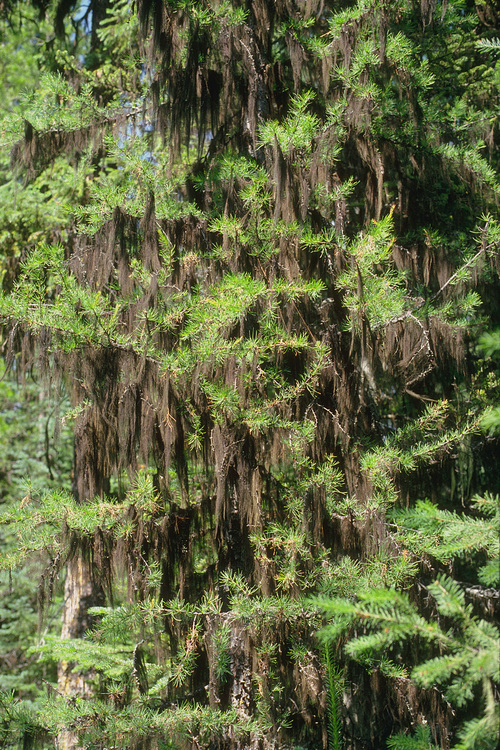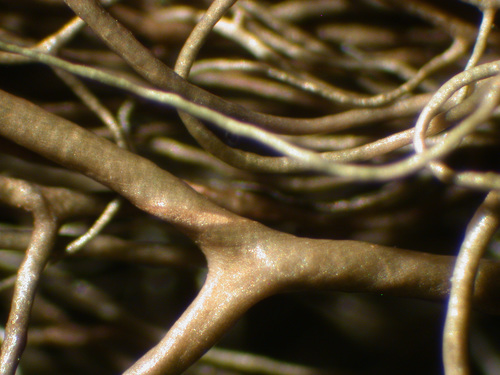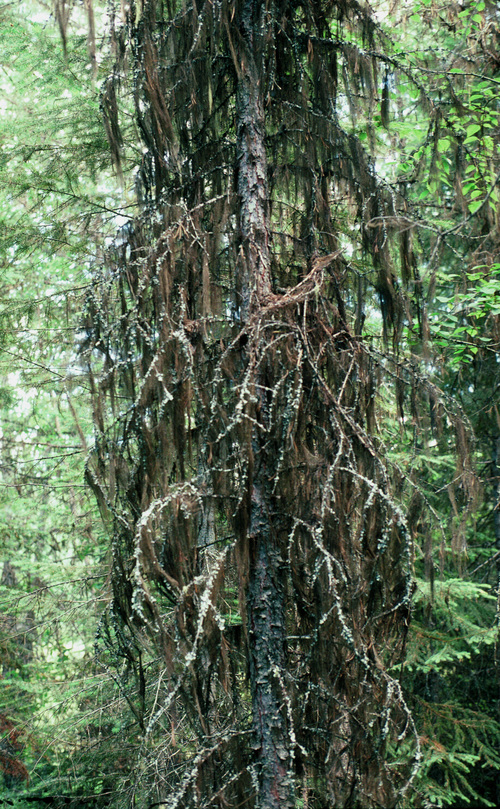Click on Characteristic name for explanation. Click on image for larger version.
|
Bryoria pseudofuscescens
| Overview
| | PNW Range: | | | West side | Common
| | East side | Common
| | Immediate coast | Occasional
| | Alpine or subalpine | Common
| | Habitat: | Moist valleys to mountains; east Cascades mostly in Abies grandis - Thuja habitats to subalpine (Abies lasiocarpa) forests; in a broader range of habitats west Cascades.
| | Substrate: | Conifers, rarely on hardwoods.
| | Comments: |
| | Synonymy: | none
|
|

Field appearance
by B. McCune
1/6

Pseudocyphellae
by B. McCune
2/6

Acetone extract
by B. McCune
5/6

Field appearance
by B. McCune
6/6
Scale: Bar=1mm unless noted
|
|
|
|
|